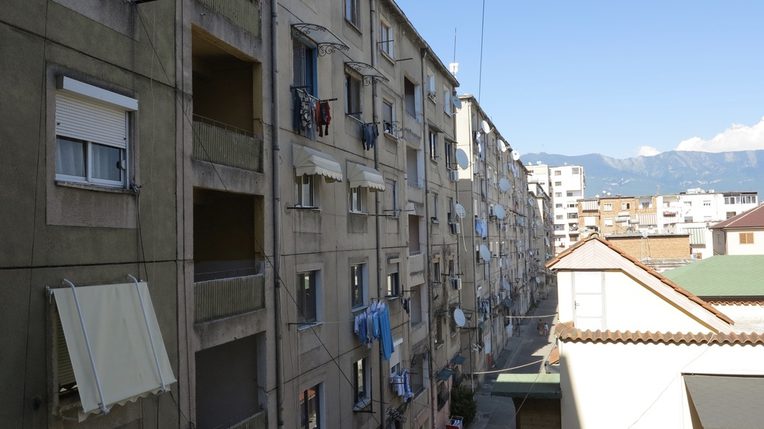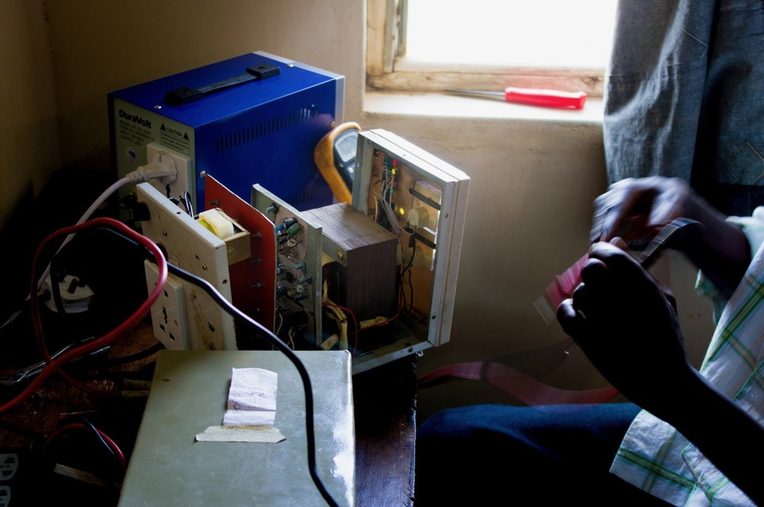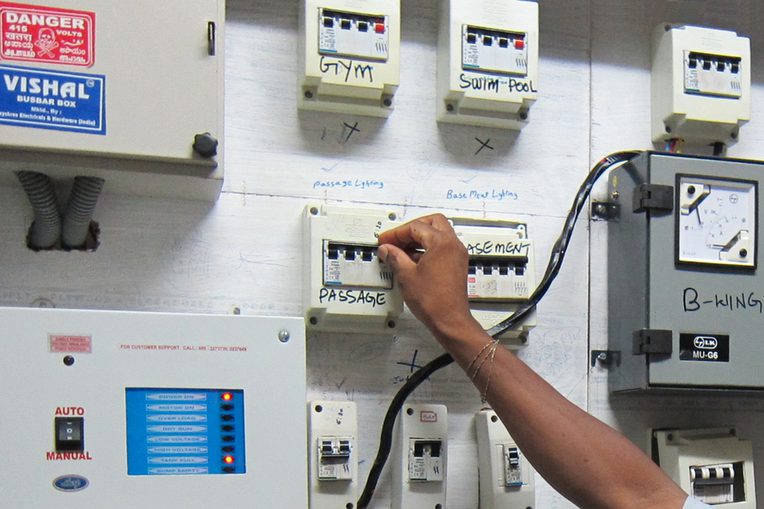Our Electro-Homes
From the Series: Our Lives with Electric Things
From the Series: Our Lives with Electric Things


As a developing country trying to catch up to the rest of Europe, Albania is switching from analog to digital broadcasting, having already fallen behind on negotiated EU deadlines. This is one among the many institutional reforms carried out in the name of democratization processes that the country has been going through.
At the beginning of the 1990s, the use that Albanians made of electricity changed radically and the most meaningful symbol of their newly gained freedoms was the openly displayed satellite television dish. Almost every balcony in Tirana had one. Those who did one better would display two satellite dishes, facing different directions. Unlike in communist times, when Albanians were afraid of inadvertently playing foreign music on the radio while switching channels, people constantly blasted hit songs from MTV.
The satellite dish signified connectedness to the world modifying Albanians sense of belonging (Winther and Wilhite 2015), and stood for enculturation into global trends. The democratization of electricity use translated into the democratization of political and social participation. People commented on world news, girls wore miniskirts, and boys grew their hair. Socialization was informed by the electrical display of different subcultures on the television screen. During the early stages of democracy in Albania, what Akhil Gupta (2015) calls the biopolitical uses of electricity had a positive effect on a society that needed to learn how to freely express itself.
Today, older prefabricated buildings, constructed during the communist regime, still display a series of satellite dishes that families use to watch foreign TV channels, while newer ones have a centralized antenna system.

In Nigeria, a connection to the grid may yield electricity for a few hours at a time, a couple of times a week, but there is no telling exactly when the wires will come to life, how long they will stay active, or how long the next interlude of darkness will be. When electricity arrives, all attention is directed to charging phones, ironing shirts, pumping water, and any other matters that require electricity.
When inverters manufactured in Asia started to reach Nigeria around the turn to the twenty-first century, they became objects of intense desire. By changing direct current into alternating, they allowed electricity to be stored in batteries when the grid was active and then used during blackouts. The inverters came to resonate with a key aspect of Nigerian electricity culture, which is rooted in a sense of distorted reciprocity between customers and electricity companies brought on by unreliable supply and uncertain pricing: whenever electricity is available, use it to the maximum!
Voltage fluctuations continually change the character of Nigerian electricity, from rough to smooth and from benign to dangerous. Gripped by suspense, people note how lights flicker and appliances hum. Is the current too weak to charge the inverter’s battery? Will a sudden peak melt a component? Analogous to the deep-seated notion that harsh conditions have forced Nigerians to develop extraordinary strength and adaptability in order to survive, the imported inverters proved too delicate to endure. Nigerian electricians, in their own words, started to “localize” inverters using casings from imported stabilizers, forging robust circuit boards by hand and replacing the standard coils with heavy-duty copper. Localized: transformed by the hand and land of Nigeria, they were able to embrace the vernacular nature of electricity.

The electrome is a construct of the relationship between being at home and the everyday practices one undertakes there through the control of electrical and electronic flows. Regulating comfort and convenience, mediating meanings and relations while also subject to techno-scientific measures, the electrome is a maker and mediator of everyday living (see also Acharya 2016).
When I consider my body controlling domestic appliances, then my being is at home. Turning off a light, switching on a heater, lowering the volume of my stereo, or a number of other possible acts are key practices within my all-electric home. For me to dwell at home is to sense the ability to make changes through controls that my home affords. Viewing everyday practices as energy-regulating acts allows me to view home differently.
As I move away from my home, my ability to control my environment varies. My control of the switches, sockets, and buttons that mediate my surroundings dwindles. Although I can swipe at my mobile phone’s home screen or listen to songs through headphones and dwell in a personal space, my inability to control a street light, the air conditioning on the metro, or the announcements on a public escalator is different from what my home affords. I begin to imagine the number of electric and electronic controls that I am able to access at home versus in the public realm. My home, where I dwell, makes it easier to shaping my personal environment. It affords a wide variety of electro-controls for my temperature, lighting, cooking, hygiene, and entertainment. I sense home when I am able to control electro-flows. To dwell is to become in a corporeal place of dense possibilities with electro-control; this is the constituent characteristic of my home, the electrome.
The section written by Ulrika Trovalla and Eric Trovalla is part of a research project supported by the Swedish Research Council (grant no. 2012-752).
Acharya, Karthikeya. 2016. “Opening the Electrome: Redefining Home for Energy Studies through Design Practice.” PhD dissertation, Aalto University.
Gupta, Akhil. 2015. “An Anthropology of Electricity from the Global South.” Cultural Anthropology 30, no. 4: 555–68.
Winther, Tanja, and Wilhite, Harold. 2015. “Tentacles of Modernity: Why Electricity Needs Anthropology.” Cultural Anthropology 30, no. 4: 569–77.